Laguna Creek Watershed
A Look Inside Our Watershed
The Creek
Laguna Creek flows 25 miles across broad floodplains and terraces shaped over time by the ancestral American and Sacramento Rivers. Historically, the creek was dry much of the year except after rain storms and in scattered deep pools. Today, major sections of Laguna Creek and its tributary streams flow year-round due to agricultural and urban runoff during dry seasons and rainfall during wet seasons.
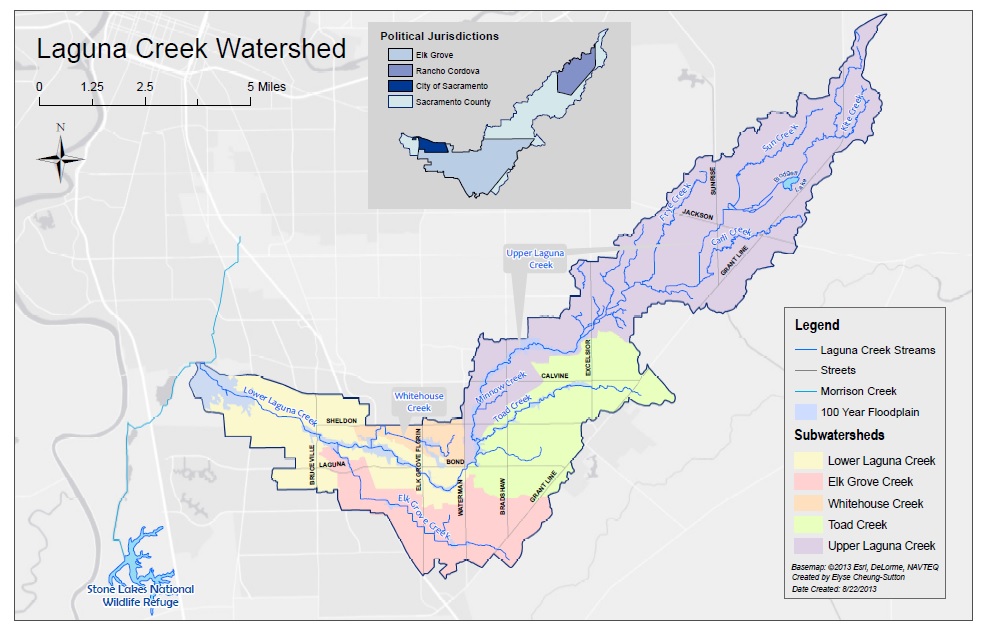
The Landscape and People
Laguna Creek meanders through what was originally vernal pool grassland prairie with scattered areas of Valley Oak savannah. Plains Miwok people fished from the creek, and hunted and gathered other food from the surrounding land. By the late 19th century, outside settlers began to farm the area, soon displacing most of the native people. Crops, pasture and non-native grasses and weeds replaced the original creekside vegetation and grasslands.
In more recent times, urban development has dramatically changed the landscape, affecting the creeks and their habitat. Creeks were moved in some places to make room for roads and houses and native creekside trees and plants were removed. Pavement and roofs now prevent rain water from soaking naturally into the ground, sending more runoff quickly into storm drains and down to the creeks, taking pollution with it and eroding natural creek beds and banks.
Today, the Laguna Creek Watershed Council and a growing number of community volunteers are taking action to conserve undeveloped portions of the watershed and restore or enhance damaged sections of the creek and its habitat for future generations to enjoy.
Explore the Watershed
Stone Lakes National Wildlife Refuge, located in the lower reaches of the watershed, includes restored wetlands and other habitat types. It’s a great place to view migratory birds, heron and other wildlife, Go to the refuge website for tour and event information.
The Bufferlands include 2,500 acres of open space, separating Sacramento’s Regional Wastewater Treatment Plant from its nearest neighbors. It is home to a variety of native California landscapes, including ancient groves of Valley Oak. Go to www.bufferlands.com for tour and event information.
The North Laguna Wildlife Area was established in the late 1980’s and provides habitat for many wild animals, and flood protection to the neighborhoods along the creek.
The Fallbrook Reach has wide natural buffers that provide wildlife habitat in the heart of Elk Grove, California. A popular spot for biking, walking and bird watching, the trail follows the creek for 3 miles from Jack Hill Park downstream to Camden Lakes.
The Vineyard Reach features open space along the creek, as well as a bike and equestrian trail accessible from Vineyard Road. Currently one-mile long, the trail will continue another 1.5 miles to Calvine Road once the trail is extended.
The Upper Watershed is still largely undeveloped. In its uppermost reaches, Laguna Creek is dry except after the winter rains, but still provides important habitat. Plans for new development could change the landscape around the creek.
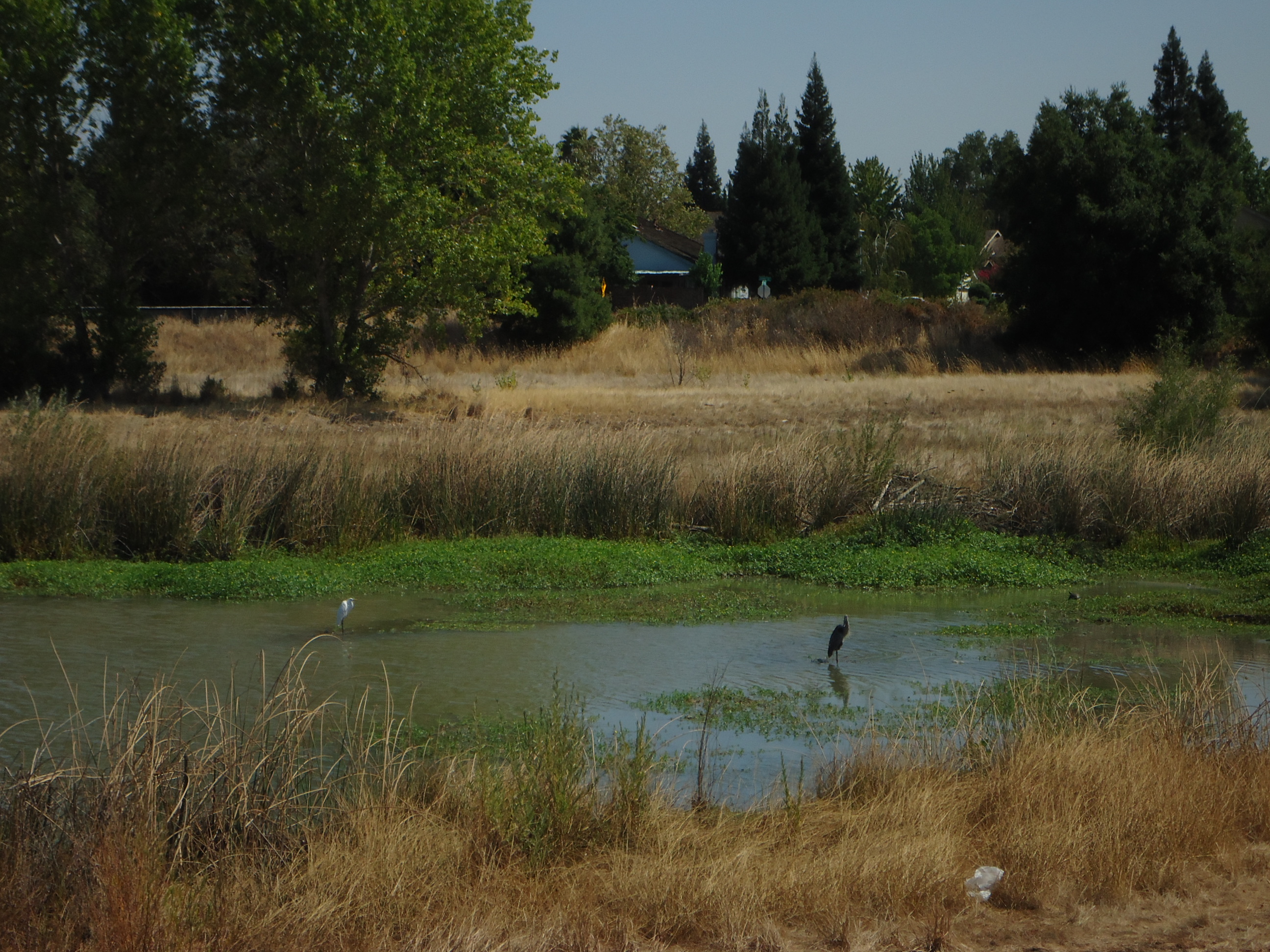
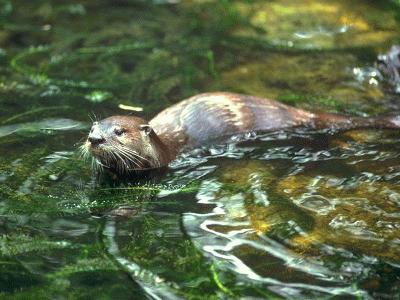
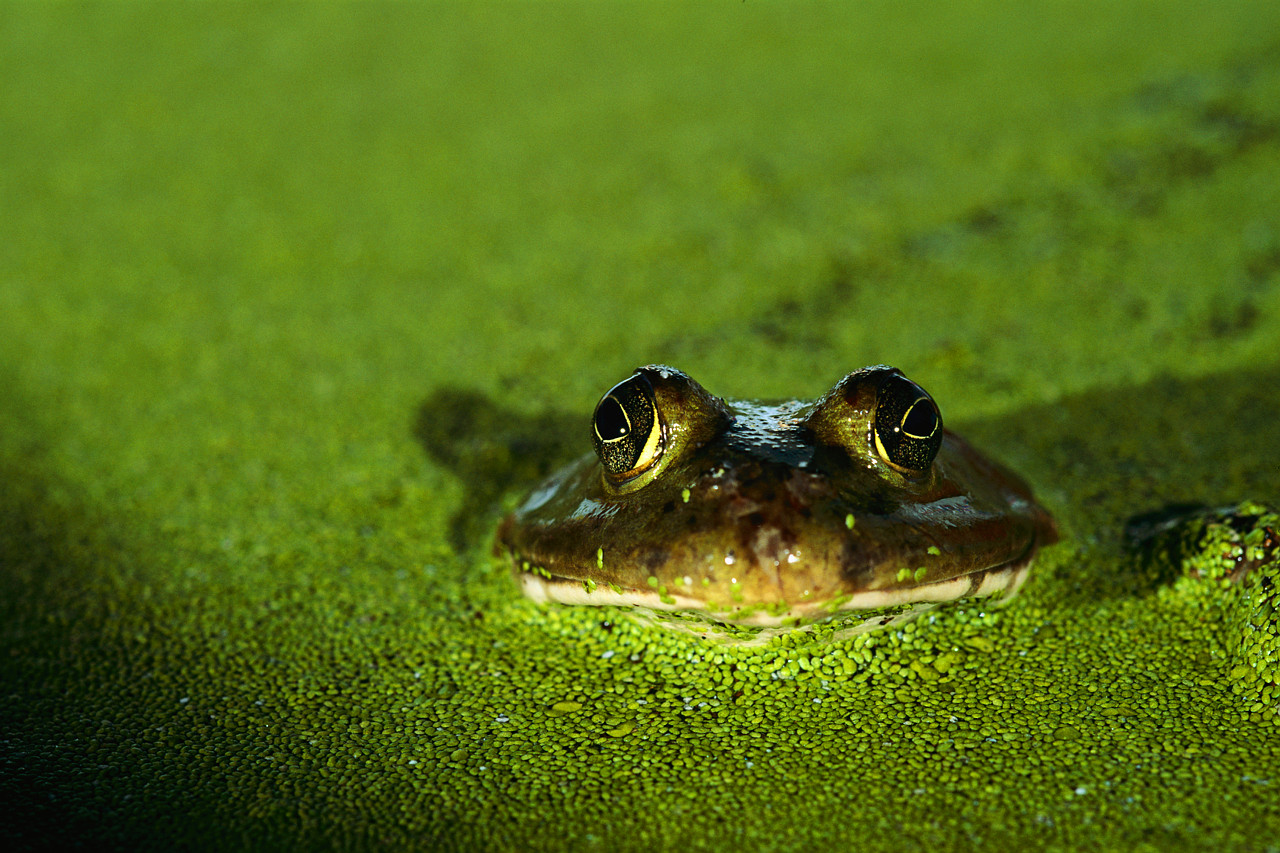

History of Laguna Creek Trails
From at least the 1970’s, Sacramento County planners and supervisors had discussed the idea of creating a bicycle trail along Laguna Creek that would serve as both a recreational opportunity for residents, and a conceptual boundary for future growth in south Sacramento County……
By 1988, the first section of the Laguna Creek Parkway was completed by the City of Sacramento as part of the North Laguna development. Bicycle and walking trails were installed on both sides of Laguna Creek from Center Parkway to Franklin Blvd., a pedestrian bridge was built over the creek to connect the two trails, and the creek channel itself was modified to increase its conveyance capacity. In addition, both banks were revegetated with native trees and shrubs, and regulations for flood risk reduction, wildlife habitat and wetlands preservation required the dedication of several hundred feet of open space riparian buffer on both sides of the creek. The North Laguna Wildlife Area reach of trails and open space is managed to this day by the City of Sacramento Department of Parks and Recreation. Funding for maintenance is provided by a perpetual assessment established in the late 1980s by the first community of residents in the area.
Since the North Laguna trail section was established, the scenario of associating creekside development with dedicated riparian buffers bounded by recreational trails has been repeated several times along Laguna Creek. In 1991 the Fallbrook Subdivision trail reach from Waterman Rd. to Elk Grove-Florin Rd. was completed. In the early 1990’s Laguna Creek north of Bond Rd. was excavated to create the Camden Lakes development with associated parks and trails around a large floodplain. The parkway regularly floods during the heavy winter storms. Also by the early 1990’s, the first phases of development of the Vineyard Springs Comprehensive Planning area (Silver Springs developments) established bicycle, walking, and equestrian trails from downstream of Excelsior Rd. to a point downstream of Vineyard Rd. In the late 1990’s the Laguna Bypass Channel was excavated along the north side of Laguna Creek from Hwy 99 to downstream of Bruceville Rd. and a bicycle / pedestrian trail has been completed along the eastern half of the Bypass reach, from HW 99 to Lewis Stein Rd. In 2005, the Creekside development at the site of the old Fish Hatchery implemented improvements to the trail between Elk Grove-Florin Rd. and Bond Rd.
Funding for operation and maintenance of the trail systems, including repair of pavement and irrigation, replanting trees and vegetation, graffiti removal and litter and trash pickup, is typically provided through assessments that were established when the adjacent land uses were developed. In short, the community residing and working in neighboring areas are paying the local park district or City Parks Department for the long-term upkeep.
Trail Interpretive Signs
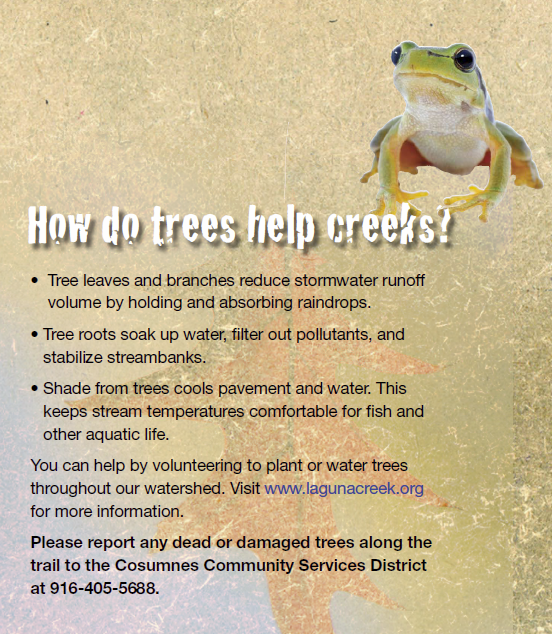 The Laguna Creek Watershed Council has partnered with the Cosumnes Community Services District, the City of Elk Grove, developer groups, and a local graphic artist to produce several streamside trail signs along both Laguna and Elk Grove Creeks.
The Laguna Creek Watershed Council has partnered with the Cosumnes Community Services District, the City of Elk Grove, developer groups, and a local graphic artist to produce several streamside trail signs along both Laguna and Elk Grove Creeks.
The value of interpretive signs is that they relate the natural history of the area as well as interesting information about plants and animals that frequent the area around the sign. You can see the them along streamside trails at Del Meyer Park, the Creekside trail (site of the old Fish Hatchery), at Pinkerton Park, and along the Laguna Springs Trail along Elk Grove Creek just south of Laguna Blvd. (along the trail behind Peet’s Coffee). Signs have also been installed along Elk Grove Creek near the Laguna Blvd. crossing, on the Longleaf Drive bridge, on the Camden Spur trail, and elsewhere. New signs are being prepared for new developments as well. The Council, working with our partners, plans to install signs throughout the watershed.
Look for the signs along the way next time you’re walking or biking the trails!
Trail Sign QR Code DEMO
Sign 1 QR Code DEMO

Sign 2 QR Code DEMO

Sign 3 QR Code DEMO

Vision for a Regional Trail System
Today’s Laguna Creek Parkway is a system of existing and proposed trails envisioned to connect the Sacramento Levee trail system to the American River Parkway via the Laguna Creek corridor and the Folsom South Canal.
Currently, for Laguna Creek alone, discontinuous trail sections account for about 10 of the 25 miles of creek. Similar situations exist with tributary creeks. As discussed previously, the planning, construction and maintenance of the existing recreational trails and riparian corridor buffers was financed by requirements and assessments placed on new streamside development projects. As a result, existing trail sections have developed in piecemeal fashion, and not always in a manner that has balanced habitat, flood risk reduction, and water quality with the recreational and financial goals of the development. Connecting these fragments will be a challenge because there is no funding mechanism and grant programs are highly competitive. An additional hurdle is property ownership. Some sections of Laguna Creek and its tributaries are located on private property, and landowners may not grant public access through their land.
The City of Elk Grove, the Cosumnes CSD, and Southgate have Trails Master Plans that include conceptualized alignments for the remaining sections of the Laguna Creek Parkway. The Upper Laguna Creek Corridor Master Plan will propose additional details concerning trail alignments and riparian buffer characteristics for the Laguna Creek corridor upstream of Waterman Rd. Three proposed development projects (Cordova Hills, Sun Creek, and the Arboretum developments) in the uppermost reaches of the watershed have trail systems associated with their project designs that will connect to the Parkway at the Folsom South Canal, with the potential of connecting to the proposed Deer Creek Hills / Alder Creek trail systems to the east.
In the lower watershed, the City of Sacramento and the SRCSD Bufferlands are exploring trail alignment options that will continue the Laguna Creek Parkway west from its current terminus at Franklin Blvd., northwest through the Bufferlands, and west through the City of Sacramento’s proposed Delta Shores development to the Sacramento Levee trail system.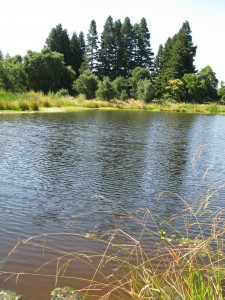
To connect existing trail sections, and to expand and complete the Laguna Creek Parkway, the LCWC recommends a watershed-wide, multi-faceted planning strategy for recreational trails that will require regional collaboration to incorporate Trails Master Plans developed by the City of Elk Grove (Elk Grove Trails Committee 2007), the Cosumnes Community Services District (CCSD), and Southgate Recreation and Parks District (Southgate), as well as the interests of streamside homeowners.
In addition to planning future reaches of the Laguna Creek Parkway, the development of future parks by the City of Elk Grove, the Cosumnes CSD, the City of Sacramento, and Southgate should include efforts to link spur trails from new parks and developments to the main Laguna Creek Parkway.
Vision for a Regional Trail System
Report A Concern
The Laguna Creek Watershed Council appreciates your interest in the health and maintenance of the watershed.
There are several local agencies who have responsibilities for different aspects of the watershed and the surrounding environment. To report trail vandalism or general trail maintenance concerns, use the appropriate contact information from the list below.
Who Should Know?
If you experience flooding near or on your property, or you want to report flooding in the road that might pose a driving hazard, contact the City of Elk Grove, Public Works Department Emergency Contact Number: (916) 405-5688
To report leaking sprinklers in medians, rights of way, or public parks systems around Elk Grove, contact the Cosumnes Community Services District at (916) 405-5688.
For developed trails along Laguna Creek north of Calvine Road contact: Southgate Recreation and Park District: (916) 428-1171
For developed creekside trails (Laguna, Whitehouse, Elk Grove Creeks) between Calvine and Bruceville Roads contact: Cosumnes Community Services District Maintenance Hotline: (916) 405-5688
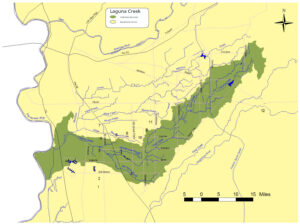
For the developed trail in the North Laguna Wildlife Area south of Laguna Creek (between Bruceville and Franklin Roads) contact: Cosumnes Community Services District Maintenance Hotline: (916) 405-5688
For the developed trail in the North Laguna Wildlife Area north of Laguna Creek (between Bruceville and Franklin Roads) contact: City of Sacramento Parks Department: (916) 808-5200
If you have other concerns such as invasive creekside plants, or planned and current development projects impacting the watershed, please email us at info@lagunacreek.org.
©Copyright 2021 Laguna Creek Watershed Council. All rights reserved.
Contact Laguna Creek Watershed Council
Wilton, CA 95693



